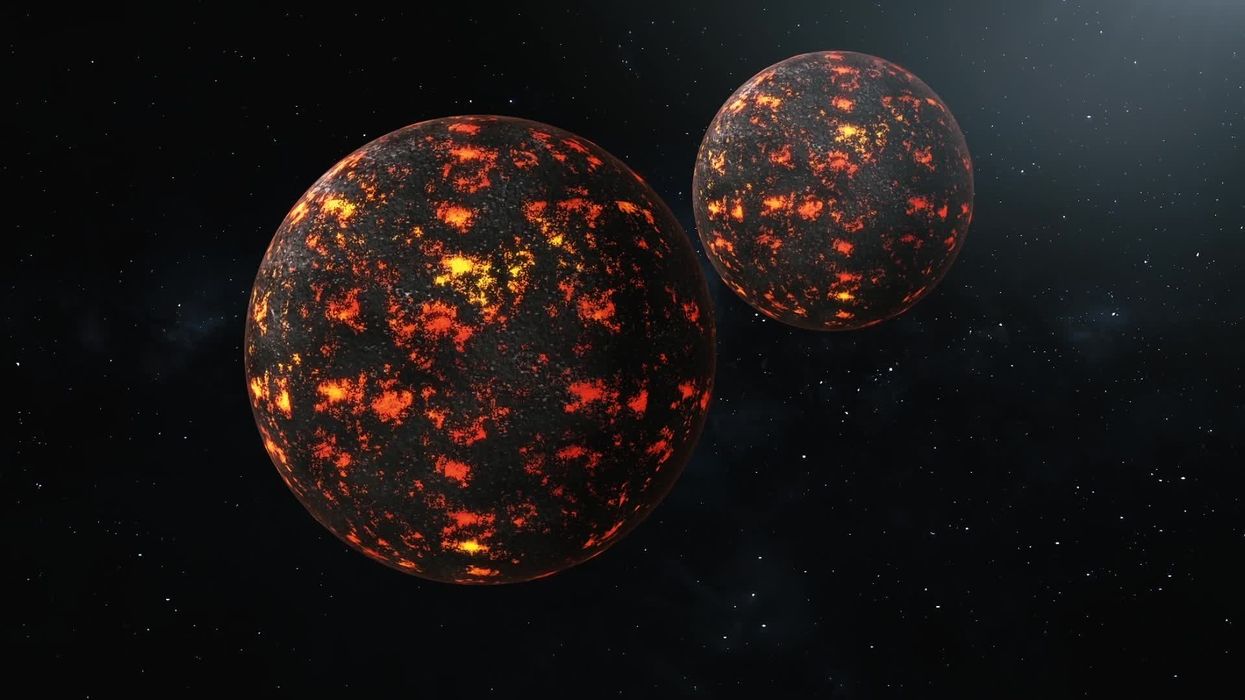Science & Tech
Harriet Brewis
Nov 06, 2023
Earth's strange blobs could be huge pieces of alien planet
News Direct / VideoElephant
What lies hundreds of miles beneath our feet is one of life’s great mysteries.
Sure, we may all learn about the core, crust and mantle during Year 7 geography classes, but no one knows for sure what constitutes the bulk of the Earth’s structure because there are no direct ways of observing the world deep below the ground.
Still, a team of scientists believe they may have just solved one of the great geological enigmas, according to a paper published in the journal Naturelast week.
The researchers believe that two giant structures which lurk below Africa and the Pacific Ocean are, in fact, the remnants of an ancient planet called Theia which crashed into the Earth billions of years ago.
This hypothesis is groundbreaking (no pun intended), because whilst members of the scientific community broadly agreed that Theia collided with our world during its infancy, no one has ever figured out what became of the doomed planet.
Direct evidence of Theia’s existence has evaded experts for years: no leftover fragments have been found floating in the solar system, and many assumed that any debris it left on Earth was consumed by the fiery magma at the heart of our planet.
However, the new theory – posed by scientists from a range of institutions including the California Institute of Technology (Caltech) and NASA’s Ames Research Center – suggests that vestiges of the ancient body remain buried some 1,800 miles underground.
Dr Qian Yuan, a geophysicist at Caltech and the study’s lead author, believes that these planetary remains make up what are known as large low-velocity provinces, or LLVPs, which were first detected below Africa and the Pacific Ocean back in the 1980s.
To give an indication of just how massive these LLVPs are, they are each bigger than the Moon.

Furthermore, the structure under Africa – an area known as Tuzo – is thought to be around 800km (497 miles) tall – the equivalent of some 90 Mount Everests stacked on top of one another, as IFLScience notes.
The blobs stand out when measured using seismic waves, indicating that they are made of something different to the surrounding mantle.
Dr Yuan’s colleagues used modelling based on Theia’s possible size and the likely speed of impact, to deduce what happened when it smashed into Earth.
They found that the blast would probably not have entirely melted the Earth’s mantle, allowing the pieces of Theia to cool and form solid structures rather than be engulfed by our planet’s inner cauldron.
“Earth’s mantle is rocky, but it isn’t like solid rock,” astrophysicist Dr Steve Desch, one of the paper’s co-authors, told CNN.
“It’s this high-pressure magma that’s kind of gooey and has the viscosity of peanut butter, and it’s basically sitting on a very hot stove.”
In such an environment, if the material which makes up the LLVPs was low enough in density, it would simply mix in with the churning mantle, Desch told the US news site.
However, if it was too dense, it wouldn’t be able to form the jagged structures that the LLVPs eventually adopted.
Thanks to the researchers’ sophisticated modelling, Yuan and his colleagues worked out that Theia could have left behind massive chunks within Earth’s mantle, and also thrown up the debris that went on to form our Moon.
“That was very, very, so very exciting,” Yuan said. “That (modelling) hadn’t been done before.”

When asked whether he expected to encounter pushback over his theory, Yuan told CNN that he wanted to stress “this is an idea; this is a hypothesis”.
“There’s no way to prove this must be the case,” he added. “I welcome other people to do this (research).”
Meanwhile, planetary scientist Dr Seth Jacobson, who was not involved in the study, stressed that the concept would be rejected by many.
“These (LLVPs) — they’re an area themselves of very active research,” Jacobson, an assistant professor at Michigan State University, told CNN , noting that there are other hypotheses surrounding the real identity of the LLPs.
One prominent theory posits that the blobs are really just piles of oceanic crust that have accumulated over billions of years
“I doubt the advocates for other hypotheses (about LLVP formation) are going to abandon them just because this one has appeared,” Jacobson acknowledged.
“I think we’ll be debating this for quite some time.”
Sign up for our free Indy100 weekly newsletter
Have your say in our news democracy. Click the upvote icon at the top of the page to help raise this article through the indy100 rankings
Top 100
The Conversation (0)














